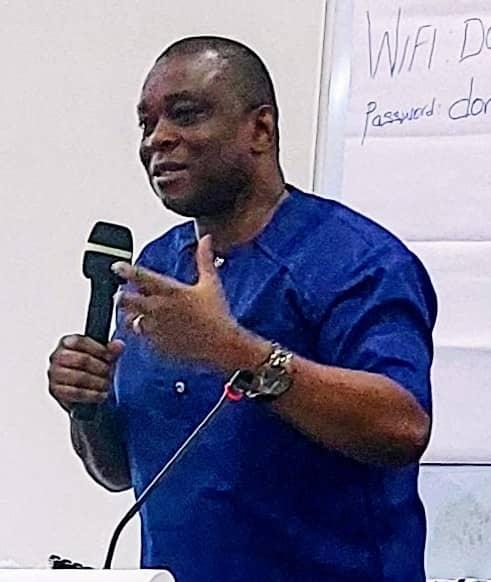Meeting with street kids and youths in Sierra Leone
A street kid or street youth is an unaccompanied person who has no permanent place to stay and does not live with a parent or guardian. They sleep in dangerous make shift places on street corners, in parks, under bridges, abandoned vehicles or in front of big buildings at city centers.
All young people deserve a roof over their heads and a safe place to call their homes. Unfortunately, there are far too many children and youths without homes and without safe places to live and learn in Sierra Leone. They are out in the street looking for safer place to be; they have been forced out on the street for economic reasons or because their families are dysfunctional and can therefore not to take care of them
UNICEF suggests that a distinction should be made between types of youths found in the street depending on their relationship to responsible adults providing a base (Annew1996 le Roux and Smith a), UNICEF distinguished between youths on the street; ‘’youths of the street and abandoned youths’’. Youths on the street, seen as youths involved in economic activity such as begging, carrying bags for people who have shopping, cleaning cars and vending commodities. They are working on the street and very visible. They are said to have a home base to which they go and contribute economically. They have a sense of belonging to a family or household and even attend school. Youths of the street are a few steps farther from home. Their ties to households are at best tenuous. Many of them are trying to have a life outside their homes or away from a responsible adult. For them the street is the significant print of reference in their situational existence. According to Annew (1996) some segment of youths on the street are further distinguished as abandoned. These have little or no contact with relatives and have little interest in been under adult supervision in the home. They have broken with conventional society and being committed towards surviving on the street.
This definition does not paint the Africa conditions. Africa has a diversity of language and culture. Using this conception of street kids in Africa is akin to imposing assumption from a distinct environment and imputing a false cultural homogeneity on Africa.
Moreover, as Apteker and Abebe (1997) pointed out, “the dichotomy of youths on the street and youths of the street is misleading because the two groups are not very distinct. They do not have different personality characteristics. Some of these youths alternate styles: There are periods when they live on the street with little or no family contacts and periods when they are at home.”
In Sierra Leone, the majority of streets youths are economically engaged at public terrain. There is evidence in the African context that the difference between youth of and on the street is due to the circumstances that they face (Apteker and Abebe 1997)
The street youth’s phenomenon is global. The concept of ‘’Street Child’’ and ‘’ Street youths’’ are now commonly used in Africa; in Europe, North America and Australia. In Africa most of these children and youths are either ‘’ run away’’ from homes where they cannot be properly taken care of or completely homeless as a result of poverty, death of parents from HIV/AIDS or war. In Sierra Leone the number of children and youths on the street began escalating in the 1980’s and increases significantly in the 90s when the civil war broke out in the country. Today, the street youths are a very familiar part of urban setting. Many move from one city section to the other in big cities and are often suspicious of everybody which makes it difficult to estimate their exact number.
Street youths in Sierra Leone are very vulnerable to disease as they very heavily indulged in risky behaviors. They can be easily spotted in parks, city centers, street corners, and bus stations looking for menial jobs to make living.
Street youths in Sierra Leone are mostly not considered by successive governments. This makes their situation worse as they sleep outside and live in filthy environments with very poor food and sometimes they can go days without food. They also have access to little or no medical facility right across the country.
Seventy percent (70%) of street youths in Sierra Leone considers themselves abandoned by both the local administration and the central government.
Today in Sierra Leone, Street youths are no longer restricted to urban areas but they can also be seen in rural areas. Before the war in Sierra Leone, street youths were male dominated but today there are a lot of female street youths who are very visible at night around entertainment areas. Most of them sell sex in exchange for money and food.
A good number of street youths in Sierra Leone do drugs and are most times very violent and ill-mannered as perceived by the general public. Their own argument is the complete opposite. They say they are very friendly and law abiding but that they are often misunderstood by the general public; they also argue that they are being marginalized from basic social amenities in the country. They further argue that they are not treated as citizens of the country because there is nothing they enjoy as rights but on the other hand, the public expect them to be very responsible.
One leader of a youth sect ”Long Bench” at Brookfields in Freetown Sierra Leone’s capital told me that the public should excuse them because he said most youths were conscripted into the warring factions as child combatants and fought in the decade long rebel war and were not properly integrated into the society at the end of the war.
By Hindowa E Saidu, FDID
Note: Hindowa E Saidu is Executive Director of Foundation for Democratic Initiatives and Development. A youth serving civil society organization that work on drug prevention and Education in Sierra Leone
Stay with Sierra Express Media, for your trusted place in news!
© 2013, https:. All rights reserved.






